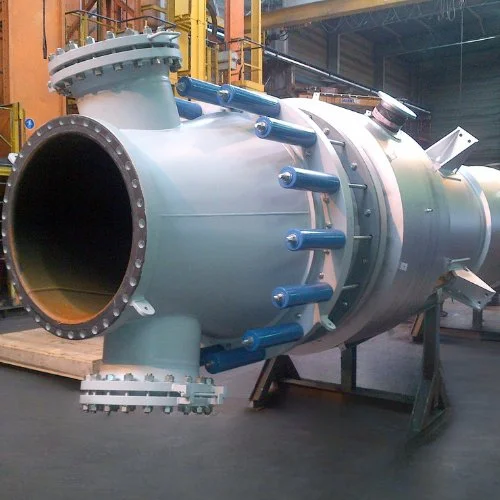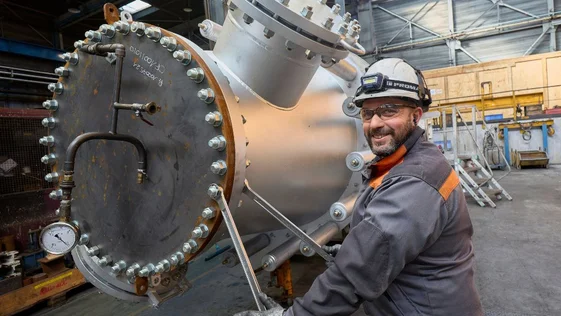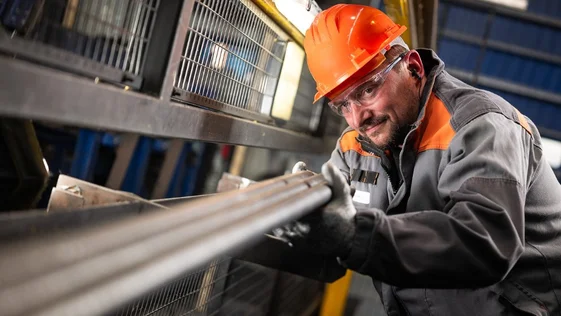Polytube - Graphite Shell and Tube Heat Exchanger
Brochures
pdf - 6 MB
-
High-Performance Corrosion Resistance
Mersen's Polytube graphite shell and tube heat exchangers are ideal for heating, cooling, condensation, evaporation, and absorption of large flow rates of ultra-corrosive chemicals.
Designed for maximum efficiency and durability, they provide long-lasting performance across a wide range of industries, including chemical processing, pharmaceuticals, hydrometallurgy, and fine chemistry.
Mersen offers small (from 10 m2 ) to very large (up to 1850 m2) graphite shell and tube heat exchangers.
-
Why Choose Mersen?
-
50.00
years of expertise in graphite heat exchanger manufacturing.
-
7500.00
operational units worldwide in demanding industries.
-
19.00
worldwide service centers for maintenance, repair, and technical support.
-
-
Graphite tubes
Graphilor® 3 graphite tubes are extruded, sintered and thoroughly impregnated with phenolic resin.
Graphite tube sheets are manufactured from graphite block material.
The tubes are cemented into the graphite tube sheets to produce the tube bundle which is inserted into the shell. The heat transfer takes place by heat conduction through the graphite tube walls between the process side and the service side.
-
Industry-Leading Graphite Tubes
- Longest monolithic graphite tubes available, up to 6 meters, without joints for superior mechanical strength.
- Phenolic resin-impregnated graphite ensures high corrosion resistance and excellent thermal conductivity (≥ 50 W/m.K).
- Certified by TÜV SÜD for outstanding mechanical strength (G30-00-220).
- Carbon fiber reinforcement available on request for enhanced durability.

-
Focus
The essentials of the Polytube graphite shell and tube heat exchanger
- 4 different tube diameters: 16/25, 32/22, 37/25 or 51/38 mm
- Modular design: number of tubes and tube length can be adjusted
- Maximum tube length: 6 meter without connection, 9,0 meter with connection
- Multi-passes design for optimized thermal efficiency and maximum heat recovery.
- Maximum tubesheet diameter: 2100 mm
- Numerous materials available for the headers and the shell
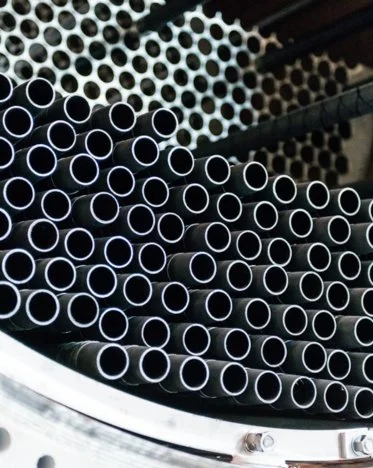
- Design pressure: -1 barg (full vacuum) to + 7 barg (105 psig) on the tube side and to + 11 barg (165 psig) on the shell side
- Design temperature: -30 to +220°C
- Heat transfer area: 10 m2 to 1850 m2
- Design: according to European Pressure Vessel Regulation, ASME Code, Chinese Pressure Vessel Regulation and other national pressure vessel regulations on request
Optional features :
- Water cooled header (for elevated incoming gas temperatures)
- Liquid distributor (falling film absorber or evaporator)
- Gas liquid separation chamber (condenser)
- Carbon fiber reinforced tubes
- Protection of the tube sheets against erosion (Rigilor or amorphous carbon inserts)
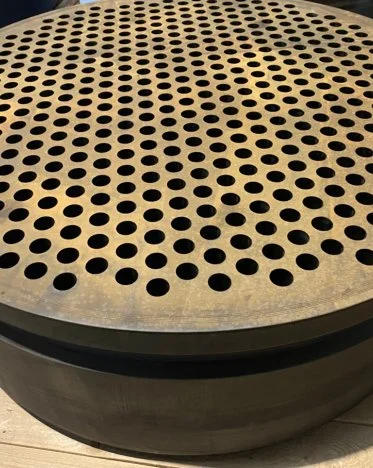
- Large heat transfer surface, up to 1850m²
- Outstanding corrosion and mechanical resistance
- Superior heat transfer performance thanks to adjustable cross sections both on tube and on shell sides
- High operational safety
- Highly reliable equipment therefore low cost of ownership and low maintenance cost
- Long lifetime
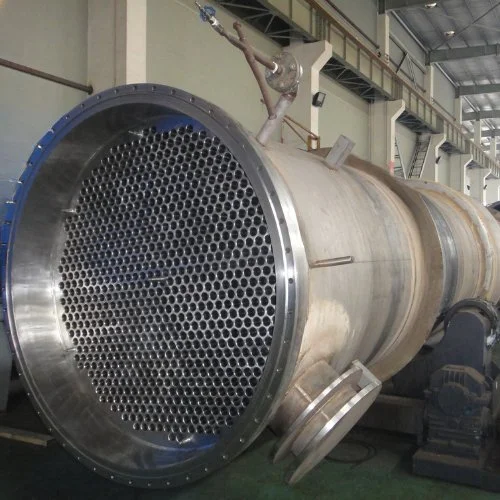
-
Applications
Where is Polytube, the Graphite shell and tube heat exchanger, used for?
Mersen's Polytube graphite shell and tube heat exchangers are ideal for heating, cooling, condensation, evaporation, and absorption of large flow rates of ultra-corrosive chemicals.
Industrial processes:
- Phosphoric acid
- Fumed silica
- Silicones
- Titanium dioxide
- Polycarbonate
- Coagulants
- Treatment, purification and concentration of spent acids
- Sulfuric acid dilution
- and many more…
-
Working Principle
How does a graphite shell and tube heat exchanger work?
Shell and tube heat exchangers transfer heat from one medium to another medium without direct contact between fluids. A shell and tube exchanger consists of a shell, tube bundle and two headers at both ends. Two fluids, of different starting temperatures, flow through the heat exchanger. One flows through the tubes (the tube side) and the other flows outside the tubes but inside the shell (the shell side). Heat is transferred from one fluid to the other through the tube walls. The fluids can be either liquids or gases on either the shell or the tube side.
-
Thermal Efficiency
Why is graphite heat exchanger the most efficient?
The thermal performance of shell and tube heat exchangers can vary significantly. It is therefore essential to select the type and size of heat exchanger that are the most adapted to the specific application and industrial process. There are a number of considerations including flow rate, pressure drop, risk of erosion, design pressure and temperature, material compatibility, fouling, and many more that should be taken in account.
-
Our experts' answers
How to choose between a graphite block heat exchanger and a graphite shell and tube heat exchanger?
-
Contact
Contact our experts
Designed to meet the toughest industrial demands, Mersen's Polytube graphite shell and tube heat exchangers ensure long-lasting performance, efficiency, and reliability in ultra-corrosive environments. Contact us today to discuss your specific application needs and discover how Polytube can optimize your heat exchange processes.
The Polytube graphite shell and tube heat exchanger is part of the Mersen range of heat exchangers resistant to corrosion and hot environments. Mersen designs and manufactures graphite cylindrical block Polybloc®, graphite shell and tube heat exchanger, cubic block heat exchanger, graphite plate and annular groove heat exchangers. We also manufacture graphite columns and graphite quenches. We propose a complete range of silicon carbide block, and shell and tube heat exchangers as well as steam jet vacuum pumps. We offer PTFE lined columns and vessels, as well as PTFE-lined steel pipes and fittings, and PTFE bellows. We supply a complete range of graphite bursting discs. We manufacture process equipment in reactive metals such as titanium, zirconium and nickel alloys.
